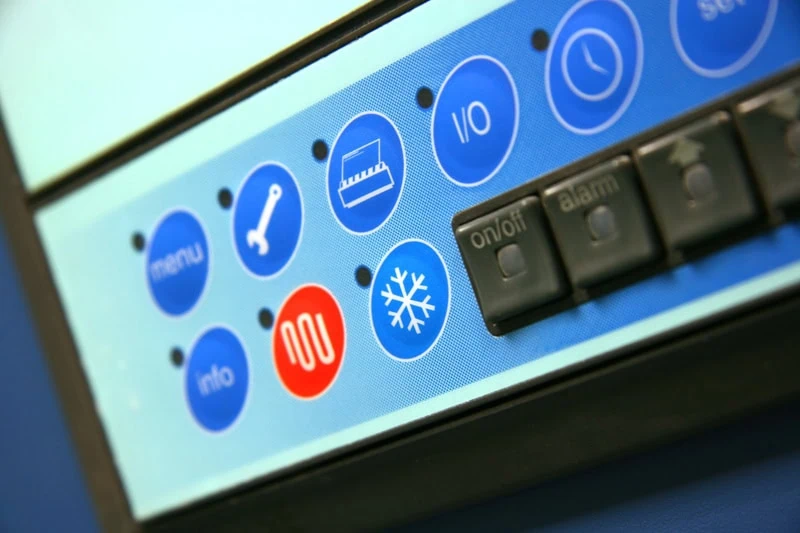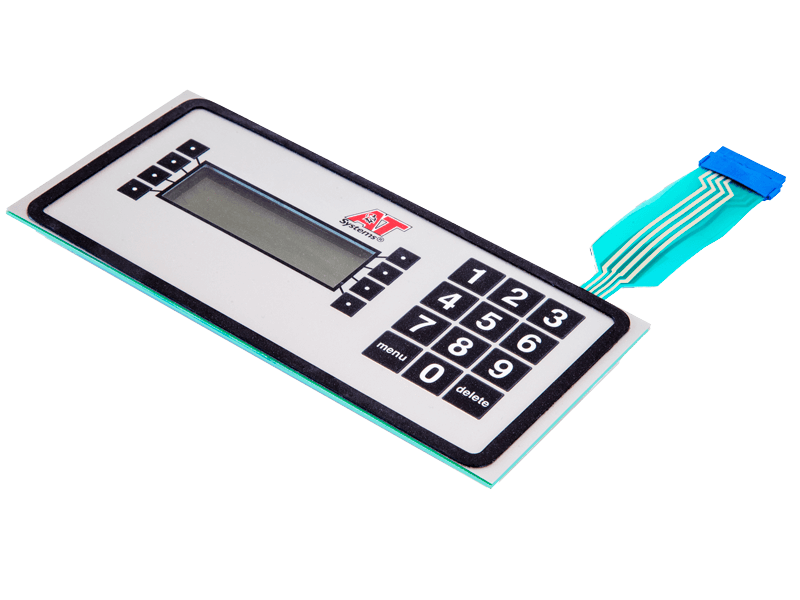Membrane Layer Switches Explained: A Comprehensive Guide to Their Advantages
Membrane layer switches over represent a versatile and advanced service for producing interface across a variety of markets. Their multilayered design not only makes certain performance via basic stress however likewise uses substantial advantages, such as durability and modification. As markets progressively seek dependable and effective control interfaces, understanding the particular benefits and applications of membrane layer switches over becomes necessary. The intricacies of their layout and execution present special challenges that quality closer evaluation. What factors should be taken into consideration to completely take advantage of their capacity in modern applications?
What Are Membrane Switches?

When stress is applied to the membrane button, the layers make get in touch with, finishing an electric circuit. This simple system allows for a variety of applications, from consumer electronic devices to industrial machinery. Membrane switches are commonly designed to be immune and water resistant to dirt and contaminants, making them suitable for atmospheres where longevity is crucial.
Furthermore, the adaptability of the products used in membrane changes promotes innovative styles that can comply with different shapes and measurements. This adaptability adds to their appeal in diverse fields, consisting of medical devices, auto controls, and home appliances. On the whole, membrane switches over represent a critical aspect in contemporary interface innovation, linking the void between customers and digital systems.
Secret Benefits of Membrane Layer Switches
Amongst the myriad of user interface choices offered, membrane layer switches over stand out for their special mix of benefits. Among the primary advantages is their lightweight and portable design, which enables for assimilation into a broad array of tools without adding substantial bulk. This is particularly helpful in applications where space is restricted.
Furthermore, membrane switches over offer resilience and resistance to environmental factors. They are commonly created with products that can stand up to moisture, dust, and different chemicals, making them appropriate for rough conditions. This sturdiness adds to a longer lifespan compared to conventional mechanical buttons.
Another significant advantage is the flexibility in modification. Membrane layer switches can be published with various graphics, shades, and appearances, enabling for tailored designs that meet specific branding or practical requirements. This versatility includes the variety of layers and circuit alternatives, giving engineers with multiple arrangements.
Additionally, the tactile comments given by some membrane switches over boosts user experience, making them much more instinctive to operate. The ease of cleansing and maintenance additionally strengthens membrane buttons as a practical choice in both consumer and industrial applications. Overall, these vital benefits make them a preferred remedy for numerous designers and makers
Applications in Numerous Industries
Just how do membrane buttons locate their place throughout varied industries? Their versatility and capability make them essential components in industries ranging from medical care to customer electronic devices. In medical tools, membrane layer buttons are made use of for their simplicity of cleaning and resistance to contamination, ensuring health in settings where sterility is essential.
In the consumer electronic devices market, these switches offer sleek, easy to use interfaces that improve product visual appeals while keeping longevity versus damage. from this source Automotive applications gain from membrane layer switches too, where they are used in dashboards and control panels, offering trusted efficiency in difficult problems.
Additionally, industrial machinery employs membrane layer switches for control panels as a result of their toughness, ability to hold up against extreme environments, and personalized layouts that provide to details operational needs. The food sector leverages membrane buttons for their convenience of usage and resistance to spills, making certain operational effectiveness in busy setups.
Inevitably, the versatility of membrane layer switches across these diverse applications highlights their vital function in modern-day innovation, boosting individual interaction while satisfying industry-specific needs. Their continued development promises additional combination right into emerging areas and cutting-edge products.
Style and Personalization Alternatives
The design and personalization alternatives readily available for membrane switches are critical for tailoring interfaces to satisfy specific individual needs and visual preferences. These switches can be made in various forms, dimensions, and designs, permitting smooth combination right into varied applications. The flexibility in design means that suppliers can develop unique interfaces that improve functionality and maintain brand name identity.
Custom-made graphics, shades, and textures can be put on the surface area of the membrane switch, providing an opportunity for branding and individual involvement. Furthermore, backlighting alternatives, such as LED lighting, can be integrated to enhance presence in low-light conditions, therefore boosting capability.
Practical elements can likewise be personalized, including tactile responses and actuation force, which can be gotten used to fit various customer interactions. The choice of products, such as polyester or polycarbonate, permits variations in durability and ecological resistance, catering to the details demands of various sectors.
Inevitably, the considerable design and modification capabilities of membrane buttons enable firms to create look at this website visually attractive and user-friendly user interfaces, making certain that their items fulfill both visual and useful demands effectively. Membrane Switches.
Factors To Consider for Implementation
Implementing membrane layer switches requires mindful consideration of different factors to make sure optimum functionality and customer experience. Among the primary factors to consider is the intended application environment. Variables such as direct exposure Our site to dampness, severe temperature levels, and chemical substances can substantially influence the button's performance and durability. Selecting products that endure these problems is crucial.

An additional essential element is the button's layout and design. Making sure that the responsive responses and actuation pressure straighten with customer assumptions improves functionality. Carrying out customer testing can offer useful understandings right into the optimum layout.
Furthermore, compatibility with digital elements need to be analyzed. The button's wiring must line up with the general system design, making certain dependable signal transmission and reducing interference.
Furthermore, production methods and prices need to be reviewed. The choice in between personalized layouts and typical models can influence both budget and lead time.
Finally, think about upkeep and repair. Membrane switches might require certain cleansing and care procedures to preserve their appearance and functionality gradually. By dealing with these factors to consider, organizations can execute membrane switches that satisfy their operational requirements while offering a favorable user experience.

Final Thought
To conclude, membrane layer changes represent a functional and durable control user interface ideal for a vast array of applications across multiple markets. Their compact style, resistance to environmental aspects, and adjustable attributes improve user experience while meeting details branding requirements. As modern technology remains to evolve, the significance of membrane layer switches in modern-day devices stays substantial, offering both performance and aesthetic allure. Future innovations will likely better broaden their applications and performance in different settings.
Membrane layer switches over stand for a sophisticated and versatile option for developing customer interfaces throughout a selection of sectors.Understanding the essential elements of contemporary electronic user interfaces, membrane layer buttons are a kind of individual interface tool that are composed of flexible, thin layers of material. In general, membrane changes stand for a crucial element in contemporary individual interface innovation, connecting the void in between customers and electronic systems.
Among the myriad of user interface options offered, membrane layer switches stand out for their distinct combination of advantages.The design and customization choices offered for membrane switches are critical for customizing user interfaces to fulfill details customer demands and visual preferences.